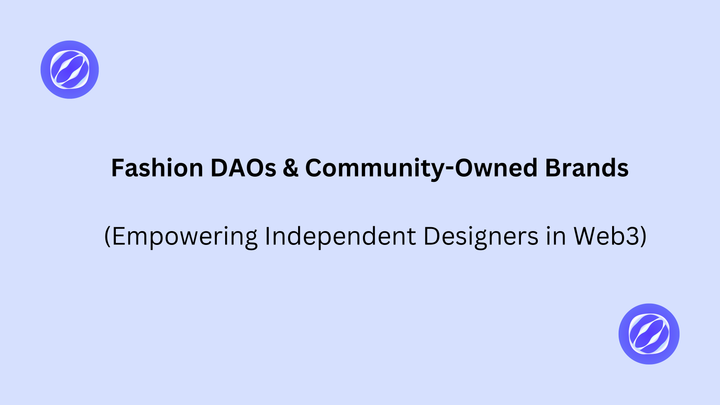Exploring Layer 1 Synergy Potential with Mitosis

Mitosis is a revolutionary protocol designed to transform how liquidity is managed in the decentralized finance (DeFi) ecosystem.
Through its Ecosystem-Owned Liquidity (EOL) model, miAssets, and purpose-built Mitosis L1 blockchain, Mitosis enables cross-chain liquidity optimization while fostering scalability and governance transparency.
This article focuses on the potential synergy between Mitosis and prominent Layer 1 (L1) blockchains, including Ethereum, Linea, Scroll, Arbitrum, Mode, Blast, Mantle, and Optimism.
Together, these integrations aim to solve key challenges in DeFi: liquidity fragmentation, inefficiency, and lack of inclusivity.
Liquidity is the lifeblood of DeFi. Yet, the current landscape relies heavily on private deals with large liquidity providers, leading to inefficiencies and opaque terms. Mitosis addresses these issues by:
- Introducing EOL, which pools and allocates liquidity transparently.
- Creating miAssets, yield-bearing tokens that represent shares in EOL.
- Powering cross-chain liquidity optimization via Mitosis L1, secured by Ethereum through EigenLayer.
For Layer 1 projects, this synergy offers improved capital efficiency, governance participation, and user engagement.
Exploring Layer 1 Synergy Potential with Mitosis
Target Audience
1. DeFi Developers: Gain access to composable infrastructure for building advanced applications.
2. Liquidity Providers (LPs): Enjoy optimized multi-chain yields without active management.
3. Layer 1 Blockchains: Attract more liquidity and users through transparent governance and efficient yield distribution.
4. DeFi Users: Experience simplified ways to earn passive income while participating in protocol governance.
Layer 1 Projects and Synergy Potential
1. Ethereum: The Cornerstone of DeFi
- Integration: Mitosis L1 uses Ethereum as its security backbone through EigenLayer.
Benefits:
-Liquidity providers deposit ETH into Mitosis Vaults and receive miETH, earning multi-chain yields.
- Transparent governance drives liquidity allocation across Ethereum-native protocols like Uniswap and Curve.
- Example Use Case: Large-scale liquidity aggregation for flagship Ethereum applications.
2. Linea: Cost-Effective Ethereum Scaling
- Integration: zk-rollup-based scalability solutions for secure and efficient liquidity distribution.
Benefits:
-miETH (Linea): ETH holders earn yields and participate in governance on low-cost infrastructure.
- Enhanced capital efficiency for users leveraging Linea zk-rollup architecture.
- Example Use Case: Directing liquidity to Ethereum-compatible DeFi applications hosted on Linea.
3. Scroll: Advancing zkEVM Solutions
- Integration: Mitosis Vaults deployed on Scroll zkEVM for secure, Ethereum-equivalent transactions.
Benefits:
-miETH (Scroll): Enables LPs to optimize yields across Scroll-native DeFi protocols.
- zkEVM compatibility ensures seamless cross-chain integration.
- Example Use Case: Liquidity management across Scroll?s DeFi ecosystem.
4. Arbitrum: Driving Layer 2 Innovation
- Integration: Leveraging Arbitrum low-cost rollup architecture for high-throughput liquidity operations.
Benefits:
-miETH (Arbitrum): Provides exposure to yields from protocols like GMX and Radiant.
- Scalable liquidity allocation supports Arbitrum’s rapid ecosystem growth.
- Example Use Case: Yield optimization for LPs while boosting liquidity depth in Arbitrum protocols.
5. Mode: Secure and Efficient Blockchain
- Integration: Mode infrastructure complements Mitosis liquidity mechanisms.
Benefits:
-miMode: Converts native tokens into yield-bearing assets with governance rights.
- Security and scalability ensure robust liquidity operations.
- Example Use Case: Enabling sustainable liquidity flows for emerging DeFi applications on Mode.
6. Blast: High-Throughput Liquidity Operations
- Integration: Blast’s performance-focused blockchain supports rapid liquidity allocation.
Benefits:
-miBlast: Allows LPs to earn yields while participating in governance.
- High transaction throughput minimizes latency in liquidity distribution.
- Example Use Case: Deepening liquidity for Blast-native DeFi applications.
7. Mantle: Modular Blockchain for Flexible Liquidity
- Integration: Mantle’s modular design aligns with Mitosis? composable infrastructure.
Benefits:
-miMantle: Mantle token holders gain cross-chain yield exposure.
- Supports advanced DeFi applications leveraging modular blockchain capabilities.
- Example Use Case: Liquidity optimization for modular DeFi protocols on Mantle.
8. Optimism: Low-Cost Ethereum Scaling
- Integration: Optimism’s optimistic rollups enhance scalability for Mitosis liquidity operations.
Benefits:
-miETH (Optimism): Enables low-cost yield generation for ETH holders.
- Governance participation drives liquidity allocation for top Optimism protocols like Synthetix.
- Example Use Case: Efficient liquidity management for Optimism-native applications.
Layer 1 Implementation Strategy
1. Technical Execution:
Exploring Layer 1 Synergy Potential with Mitosis
- Deploy Mitosis Vaults on target L1s.
- Enable cross-chain liquidity via miAssets.
- Utilize Mitosis L1 for transparent governance and yield optimization.
2. User Engagement:
- Simplify user participation through intuitive interfaces and miAsset tools.
- Empower LPs with governance rights and optimized returns.
3. Developer Enablement:
- Provide composable infrastructure for building DeFi applications.
- Integrate with existing DeFi protocols to enhance liquidity depth.
Conclusion
Mitosis is a catalyst for DeFi innovation, offering Layer 1 projects the tools to scale liquidity, enhance governance, and empower users. By integrating with Ethereum, Linea, Scroll, Arbitrum, Mode, Blast, Mantle, and Optimism, Mitosis can transform liquidity from passive capital into an active, yield-generating force across the DeFi landscape.
The synergy between Mitosis and these L1s lays the groundwork for a more inclusive, efficient, and sustainable DeFi ecosystem.



Comments ()